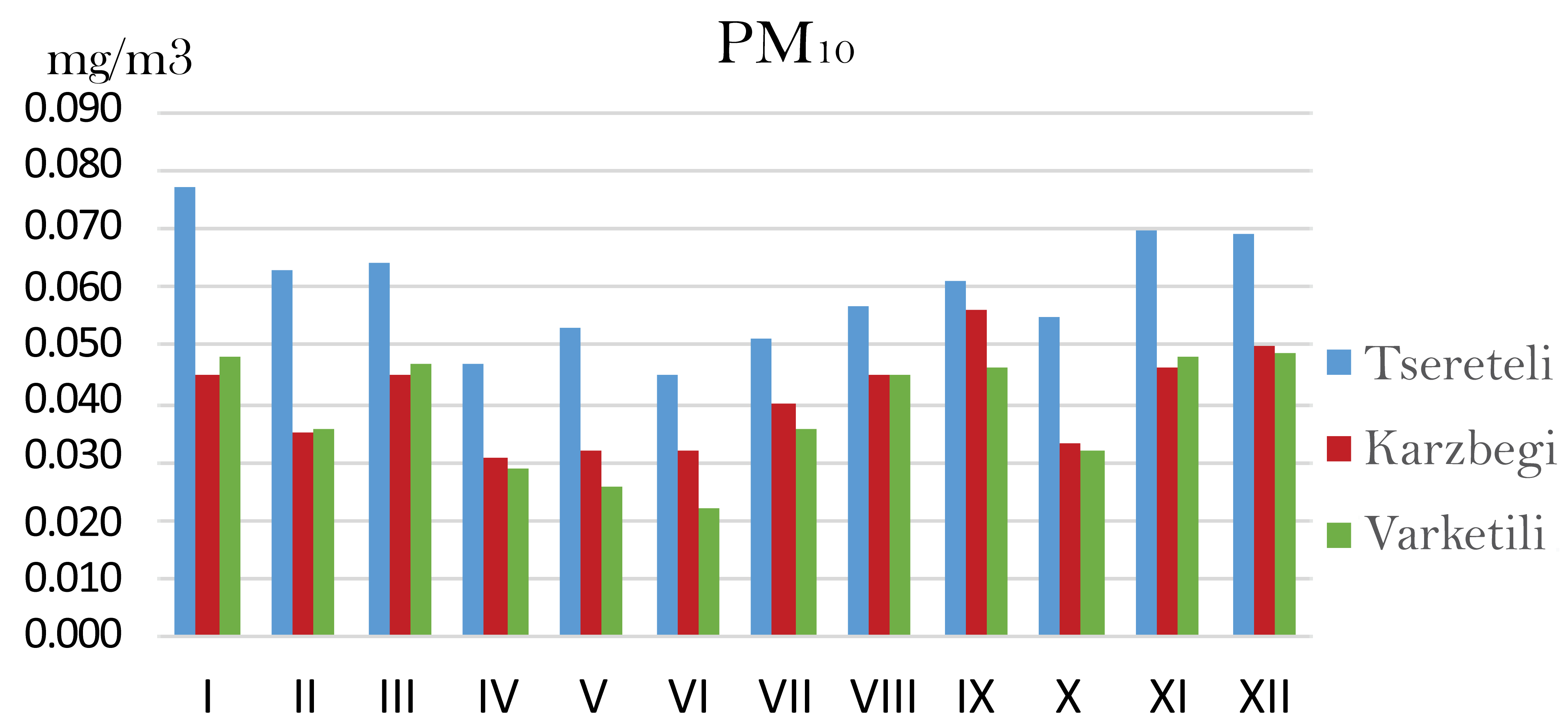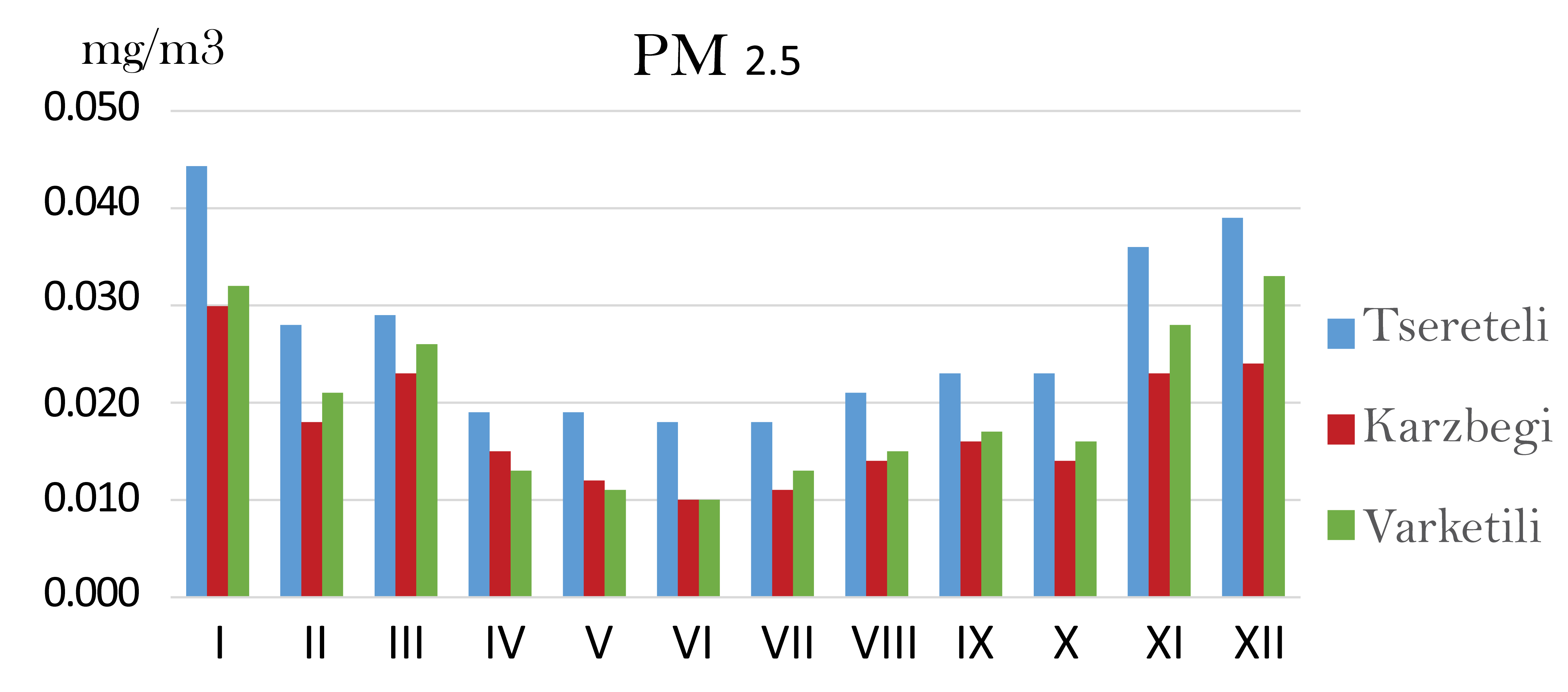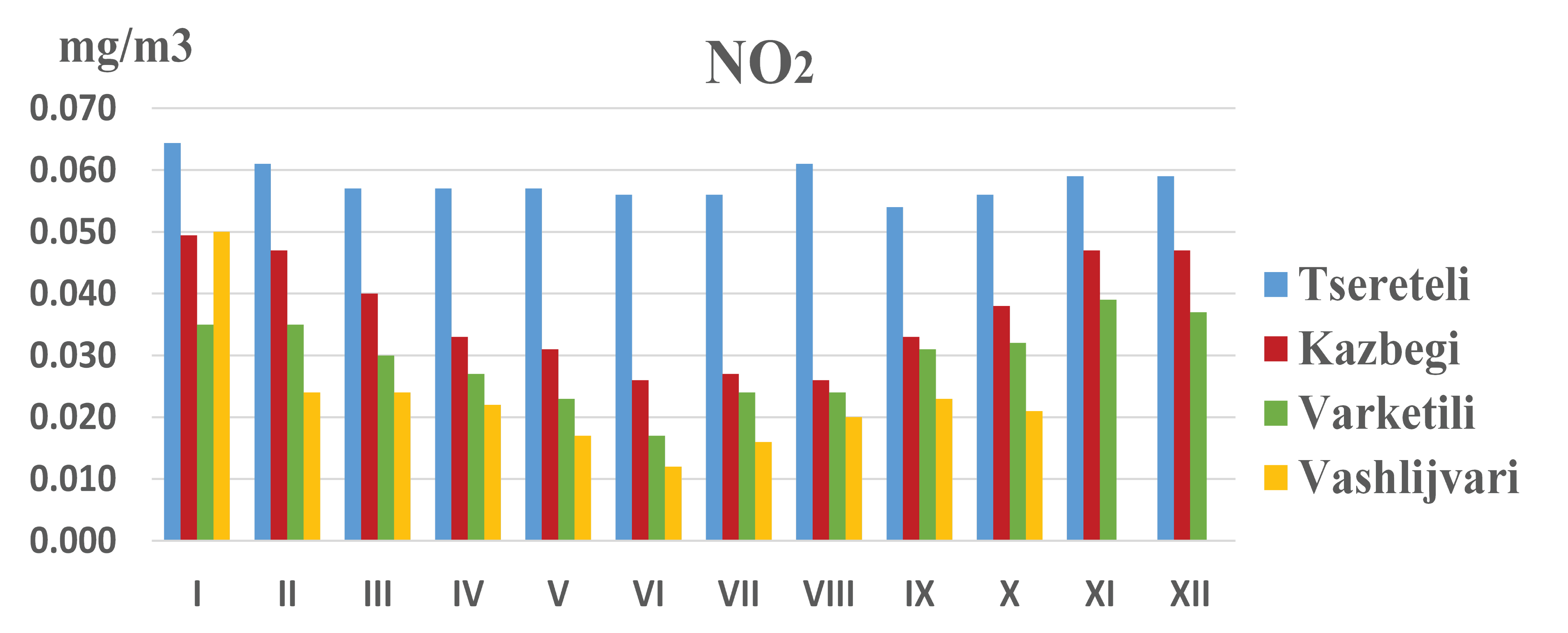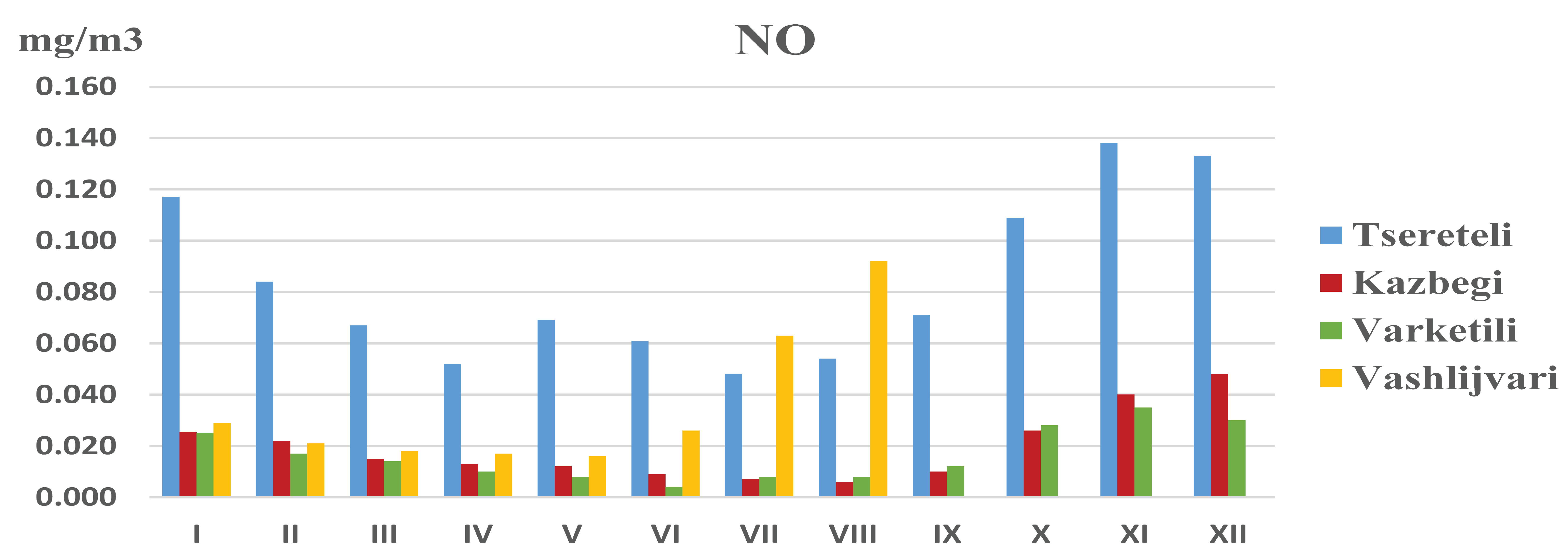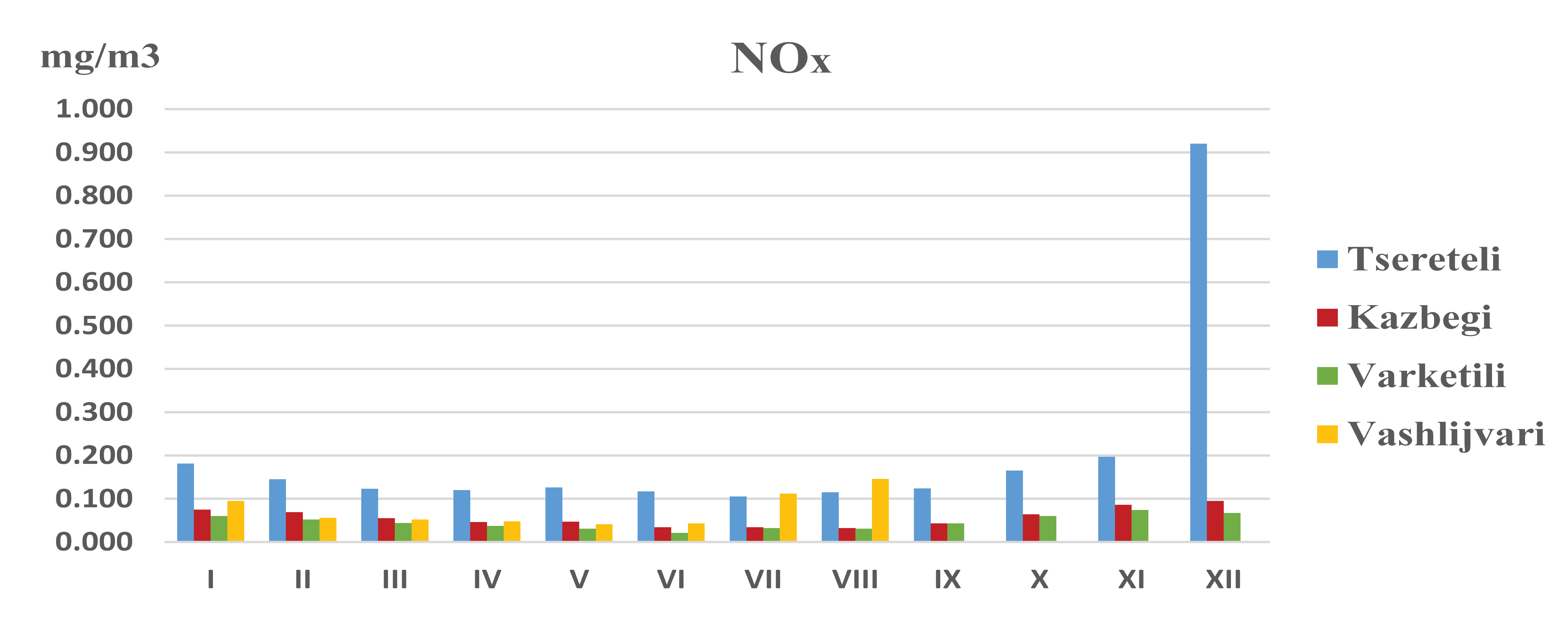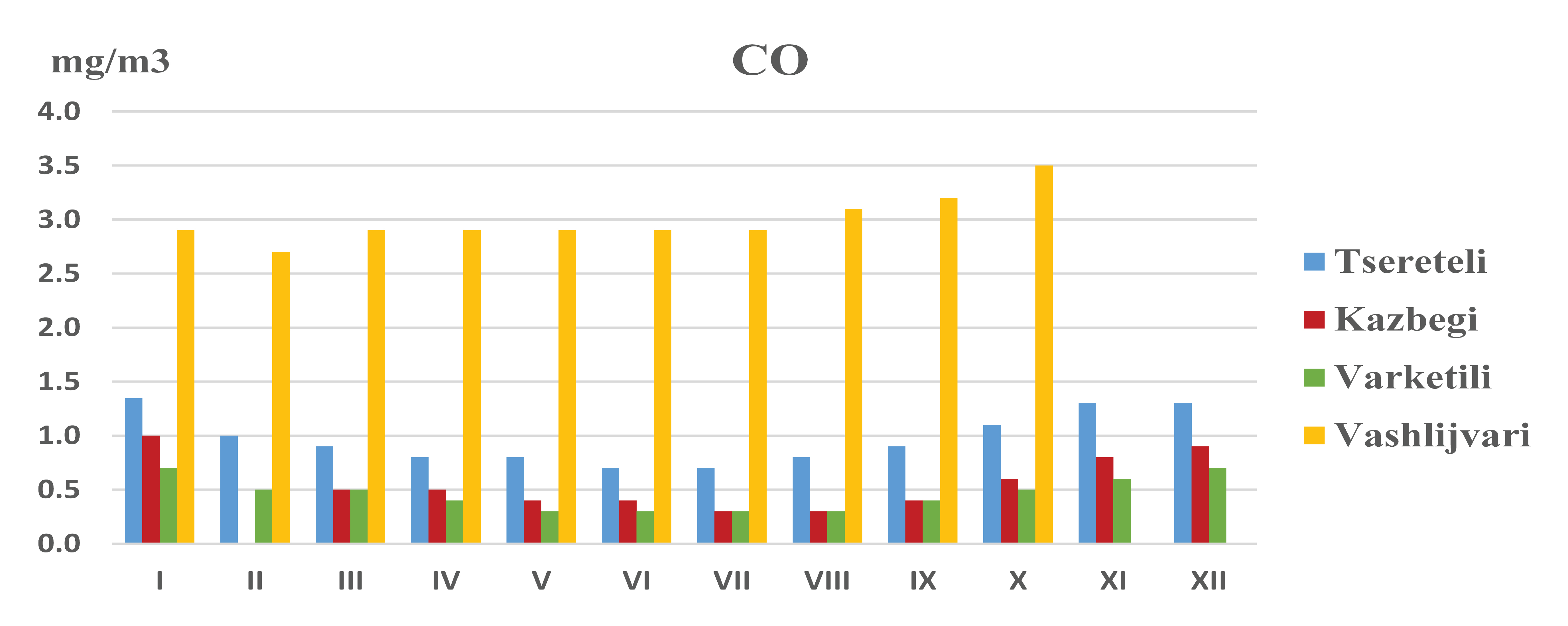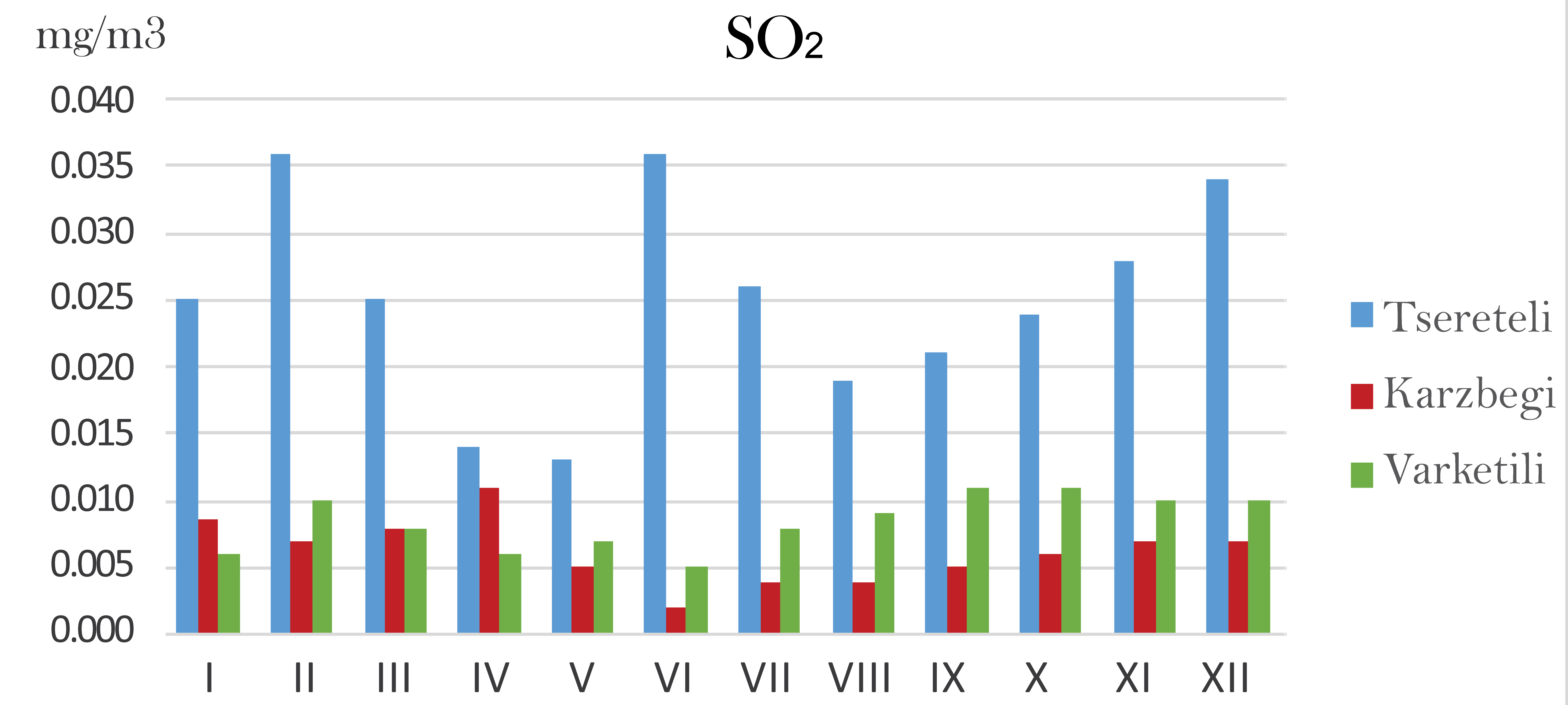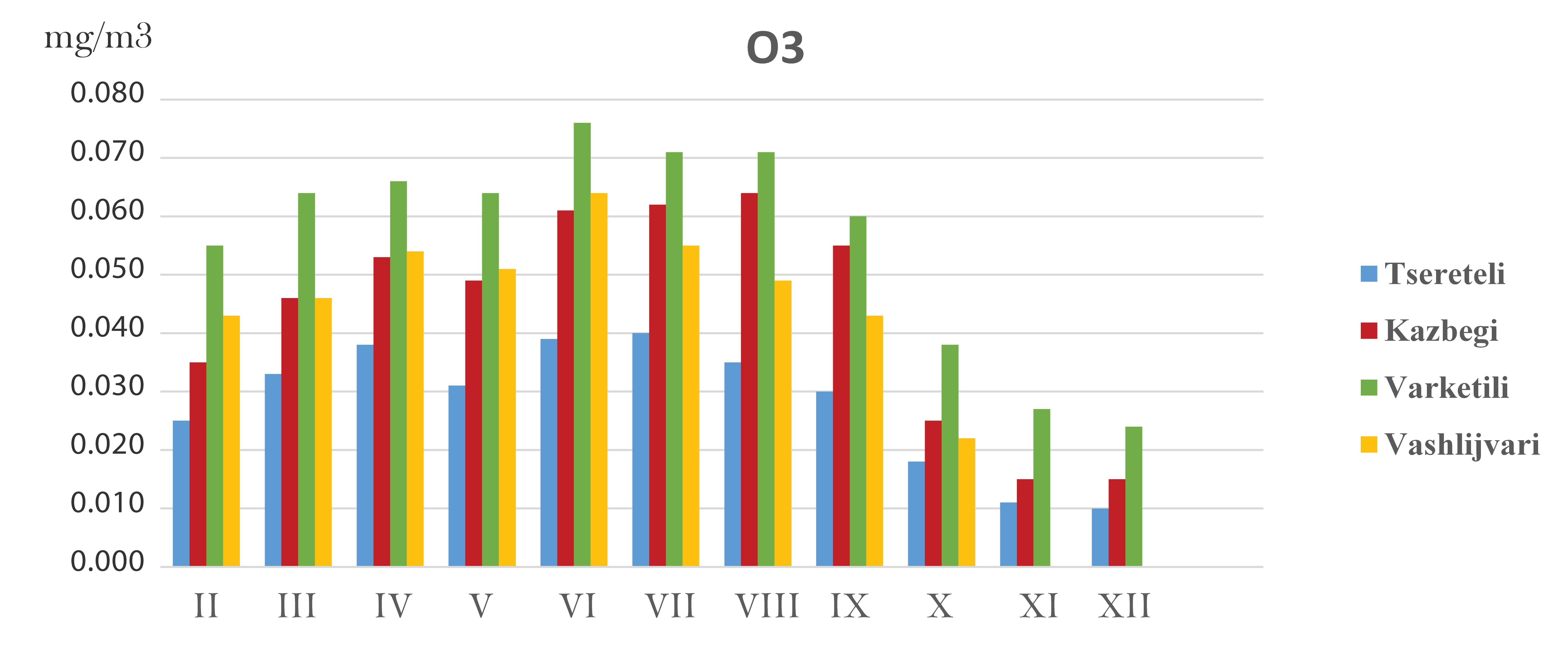Journal Name: Scholar Journal of Applied Sciences and Research
Article Type: Survey Report
Received date: 09 March, 2018
Accepted date: 05 April, 2018
Published date: 09 April, 2018
Citation: Bakradze E, Kuchava G, Arabidze M, Khomeriki I, Vatashidze QK (2018) Results of 2017 Monitoring of Atmospheric Air Pollution in Tbilisi, Georgia. Sch J Appl Sci Res Vol: 1, Issu: 1. (34-36).
Copyright: © 2018 Bakradze E, et al. This is an openaccess article distributed under the terms of the Creative Commons Attribution License, which permits unrestricted use, distribution, and reproduction in any medium, provided the original author and source are credited.
Abstract
In the work is discussed in results of air pollution monitoring on four stations and passive sampling in 2017. In Tbilisi in some cases high concentrations of some pollutants have been identified. An air pollutant is a substance in the air that can have adverse effects on humans and the ecosystem. The substance can be solid particles, liquid droplets, or gases. A pollutant can be of natural origin or man-made. Pollutants are classified as primary or secondary. Primary pollutants are usually produced from a process, such as ash from a volcanic eruption. Other examples include carbon monoxide gas from motor vehicle exhaust, or the Sulfur dioxide released from factories. Secondary pollutants are not emitted directly. Rather, they form in the air when primary pollutants react or interact. Ground level ozone is a prominent example of a secondary pollutant. Some pollutants may be both primary and secondary: they are both emitted directly and formed from other primary pollutants [1].
Abstract
In the work is discussed in results of air pollution monitoring on four stations and passive sampling in 2017. In Tbilisi in some cases high concentrations of some pollutants have been identified. An air pollutant is a substance in the air that can have adverse effects on humans and the ecosystem. The substance can be solid particles, liquid droplets, or gases. A pollutant can be of natural origin or man-made. Pollutants are classified as primary or secondary. Primary pollutants are usually produced from a process, such as ash from a volcanic eruption. Other examples include carbon monoxide gas from motor vehicle exhaust, or the Sulfur dioxide released from factories. Secondary pollutants are not emitted directly. Rather, they form in the air when primary pollutants react or interact. Ground level ozone is a prominent example of a secondary pollutant. Some pollutants may be both primary and secondary: they are both emitted directly and formed from other primary pollutants [1].
Report
The average concentration of each contaminant is given in Table 1. Monitoring of atmospheric air in Tbilisi was also carried out by three automated stations, located in Tsereteliave, Kazbegiave and Varketili. At the above mentioned stations were measured the concentrations of the following pollutants: PM10, PM2.5, Carbon dioxide, Sulfur dioxide, Nitrogen oxide and dioxide, NOX and Ozone (Table 2).
Table 1: Average concentration of pollutants recorded at the background automated station in Tbilisi.
| Observation Points | Nitrogen dioxide NO2 (mg/m3) | Nitrogen Oxide NO | NOx | Carbon monoxide CO | Ozone O3 |
|---|---|---|---|---|---|
| Vashlijvari | 0.023 | 0.035 | 0.074 | 3 | 0.044 |
Table 2: Average annual concentrations of pollutants observed on automated stations in Tbilisi.
| Observation Points | PM10 | PM2.5 | Nitrogen dioxide NO2 | Nitrogen oxide NO | NOx | Carbon monoxide CO | Sulfur dioxide SO2 | Ozone O3 |
|---|---|---|---|---|---|---|---|---|
| Tsereteliave. N105 | 0.059 | 0.026 | 0.058 | 0.085 | 0.0143 | 1 | 0.024 | 0.027 |
| Al.Kazbegi Ave Red garden | 0.041 | 0.018 | 0.037 | 0.02 | 0.057 | 0.5 | 0.006 | 0.041 |
| Varketili III, I MkR | 0.039 | 0.02 | 0.029 | 0.017 | 0.046 | 0.5 | 0.008 | 0.055 |
It is also noteworthy that in 2017, in May, July, September and November, for the purpose of determining the atmospheric air quality in Georgia, including in Tbilisi, four stages of atmospheric air pollution passive sampling were conducted. According to the methodology of the measurement, a certain period of time (two weeks) would be to place indicator tubes in pre-selected points for different settlements. The analyzes were made in UK Accredited Laboratory [2].
At different points of the city, the samples were taken for identification of different contaminants (Nitrogen and Sulfur dioxides, Ozone and Benzene). Assessment of the concentrations of accepted concentrations was achieved by the harmonized system with EU atmospheric air quality indicators for each pollutant 10 levels of pollution, 1-3 is low index, 4-6 medium, 7-9 high and 10 very high (Table 3). Values of concentration of harmful substances in air and corresponding air quality indicators according to EU regulations.
Table 3: Concentrations was achieved by the harmonized system with EU atmospheric air quality indicators for each pollutant.
| Index | 1 | 2 | 3 | 4 | 5 | 6 | 7 | 8 | 9 | 10 | |
|---|---|---|---|---|---|---|---|---|---|---|---|
| Ozone (O3) | Limit | Low | Low | Low | Average | Average | Average | High | High | High | Very high |
| μ/m3 | 0-39 | 40-79 | 80-120 | 121-147 | 148-174 | 175-200 | 201-234 | 235-267 | 268-300 | 301≤ |
| Index | 1 | 2 | 3 | 4 | 5 | 6 | 7 | 8 | 9 | 10 | |
|---|---|---|---|---|---|---|---|---|---|---|---|
| Nitrogen Dioxide (NO2) | Limit | Low | Low | Low | Average | Average | Average | High | High | High | Very high |
| μ/m3 | 0-13 | 14-26 | 27-40 | 41-54 | 55-67 | 68-80 | 81-93 | 94-106 | 107-120 | 121≤ |
| Index | 1 | 2 | 3 | 4 | 5 | 6 | 7 | 8 | 9 | 10 | |
|---|---|---|---|---|---|---|---|---|---|---|---|
| Benzene (C6H6) | Limit | Low | Low | Low | Average | Average | Average | High | High | High | Very high |
| μ/m3 | 0-1,6 | 1,7-3,3 | 3,4-5 | 45,1-5,6 | 5,7-6,3 | 6,4-7 | 7,1-8 | 8,1-9 | 9,1-10 | 10≤ |
| Index | 1 | 2 | 3 | 4 | 5 | 6 | 7 | 8 | 9 | 10 | |
|---|---|---|---|---|---|---|---|---|---|---|---|
| Sulfur Dioxide (SO2) | Limit | Low | Low | Low | Average | Average | Average | High | High | High | Very high |
| μ/m3 | 0-41 | 42-83 | 84-125 | 126-166 | 167-207 | 208-250 | 251-333 | 334-417 | 418-500 | 500≤ |
Average concentrations of Carbon dioxide, Nitrogen oxide and dioxide in the Vashlijvari background automatic station were within the norm established by the Georgian Technical Regulation. The average concentration of ozone 0,044 mg/m3 was 1.5 times higher than the maximum permissible concentration.
Figure 1-8 shows the average monthly concentrations of pollutants defined on auto stations (Figure 1-8).
Figure 1: PM10 concentrations, mg/m3.
Figure 2: PM2.5 concentrations, mg/m3.
Figure 3: NO2- concentrations, mg/m3.
Figure 4: NO concentrations, mg/m3.
Figure 5: NOx- concentrations, mg/m3.
Figure 6: CO- concentrations, mg/m3.
Figure 7: SO2- concentrations, mg/m3.
Figure 8: Ozone concentrations, mg/m3.
The annual concentrations of Sulfur dioxide, Carbon monoxide and Ozone were within the scope on the Tsereteli Avenue. The average annual concentration of nitrogen dioxide 0.058 mg/m3 was 1.5 times higher than the permitted concentrations of Nitrogen oxide and 0.085 mg/ m3, 1.4 times the Nitrogen oxide.
The average annual concentrations of Nitrogen dioxide and oxide, Sulfur dioxide and Carbon dioxide on Kazbegi Avenue were within the norm, while the average annual concentration of Ozone was 0.041 mg/m3, 1.4 times higher than the permissible concentration.
Conclusion
Average annual concentrations of Nitrogen dioxide and oxide, Sulfur dioxide and Carbonate in Varketil were within the norm, while the average annual concentrations of Ozone were 0.055 mg/m3 1.8 times higher than the permissible concentration concentrations.
The PM10 content in Kazbegi Avenue and Varketili throughout the year was compared to the 24-hour norm of the EU-0.05 mg/m3 and the annual permissible concentration – 0.04 mg/m3.
On the Tsereteli Avenue, the PM2’s (212 day) data was exceeded and its highest concentration - 0.165 mg/m3 was recorded on January 17 and it was 3.3 times higher than the permissible value. At Kazbegi Avenue exeded concentrations were observed in 86 days: Maximum was reported on September 7, when the PM10 content reached 0.139 mg / m3, which was 2.8 times higher than the norm, and in Varketil was exceeded during the 85 days and its maximum value was January 18 0.130 mg / m3, which exceeded the permissible value 2.6 times. As for the average annual importance of PM10, it is 1.5 times on Tsereteli Avenue, in Kazbegi Avenue, and in Varketili Top of form the content of PM2.5 was also compared with the annual permissible concentration of the EU - 0.025 mg/m3. Its content in Kazbegi Avenue and Varketili did not exceed the norm, and on Tsereteli Avenue there was a slight overtaking on the norm.
St. in Tbilisi, 110 indicators was measured in 21 stages in four stages (measurement results are given in Table 4). From this, Nitrogen dioxide -80, Sulfur dioxide - 6, Ozone-12 and Benzene-12 measurements recorded. Sulfur dioxide and ozone low indexes were observed everywhere. The Nitrogen dioxide index was only 15 in the lowest, 55 in the case average, and 10 in the case of high. Benzene index 9 was low and in 3 cases-average.
Table 4: The results of four stages of passive sampling in Tbilisi.
| Adress | Nitrogen Dioxide μ/m3 | Sulfur Dioxide, μ/m3 | Ozone | Benzene, μ/m3 | ||||||||||||
|---|---|---|---|---|---|---|---|---|---|---|---|---|---|---|---|---|
| Stages | I | II | III | IV | I | II | III | IV | I | II | III | IV | I | II | III | IV |
| Metro station "Isani" | 56.05 | 61.9 | 78.42 | 63.89 | 52.21 | 38.34 | 2.6 | |||||||||
| Tashkent Street | 60.41 | 60.44 | 81.98 | 69.59 | ||||||||||||
| Gldani I mk/region | 21.92 | 20.01 | 27.71 | 38.59 | 44.16 | 16.35 | ||||||||||
| Marjanishvili Square | 53.48 | 54.79 | 63.53 | 67.62 | 3.88 | 2.36 | 48.24 | 38.84 | 2.6 | |||||||
| Metro Station "Delisi" | 58.93 | 61.28 | 81.5 | 70.67 | Metro Station "Technical University" | 85.41 | 85.51 | - | 83.62 | 2.7 | 2.7 | 6.2 | ||||
| Godziashvili and Topuria streets crossing | 69.62 | 63.46 | 73.25 | 73.8 | ||||||||||||
| On the opposite side of the bus station "Okriba" | 43.86 | 60.99 | 68.95 | 65.99 | <2.46 | 2.36 | <2.17 | <2.83 | 38.06 | 49.73 | 3.6 | |||||
| Agladze street | 53.46 | 55.86 | 70.52 | 63.26 | ||||||||||||
| Big Dighomi, Petritsi Street | 34.94 | 36.36 | 54.31 | 45.55 | ||||||||||||
| Bendeliani street | 23.5 | 25.39 | 33.9 | 44.92 | 59.23 | |||||||||||
| Freedom Square | 51.89 | 56.96 | - | 59.22 | ||||||||||||
| With the first school | 64.86 | 67.18 | 88.73 | 64.37 | ||||||||||||
| Rustaveli Ave. 31 | 67.31 | 73.41 | - | 79.36 | ||||||||||||
| Avlabari Square | 76.04 | 79.47 | 105.23 | 73.01 | 2.5 | 3.3 | ||||||||||
| Mukhiani, Gobronadze Street | 39.58 | 48.51 | 51.34 | 53.13 | 14.35 | |||||||||||
| Arakishvili street | 41.25 | 44.83 | 52.47 | 56.21 | ||||||||||||
| Mziuri park area | 27.89 | 30.23 | 34.36 | 47.08 | 59.42 | |||||||||||
| Melikishvili street | 84.88 | 89.83 | 111.77 | 77.15 | 2.3 | 3.4 | 6 | |||||||||
| Lebanon Street | - | 36.3 | 37.49 | 44.06 | ||||||||||||
| Digomi, Mikeladze street | 44.09 | 50.6 | 48.65 | 46.67 | 8.62 | |||||||||||
